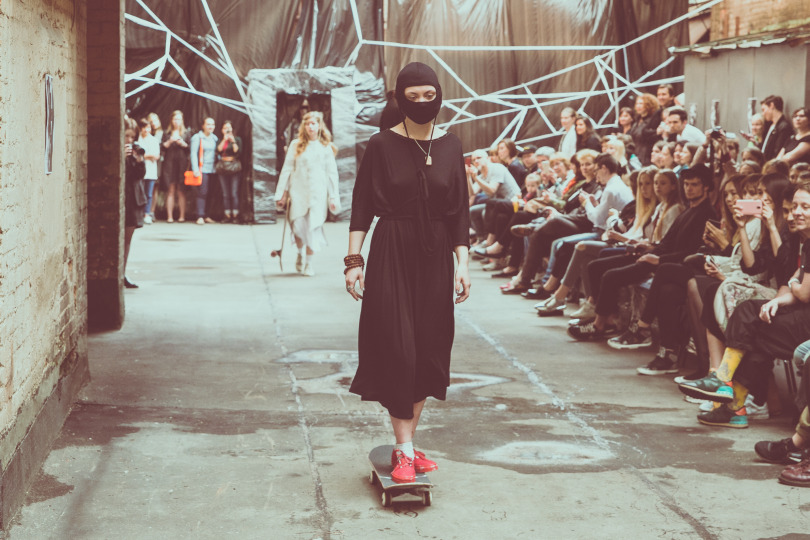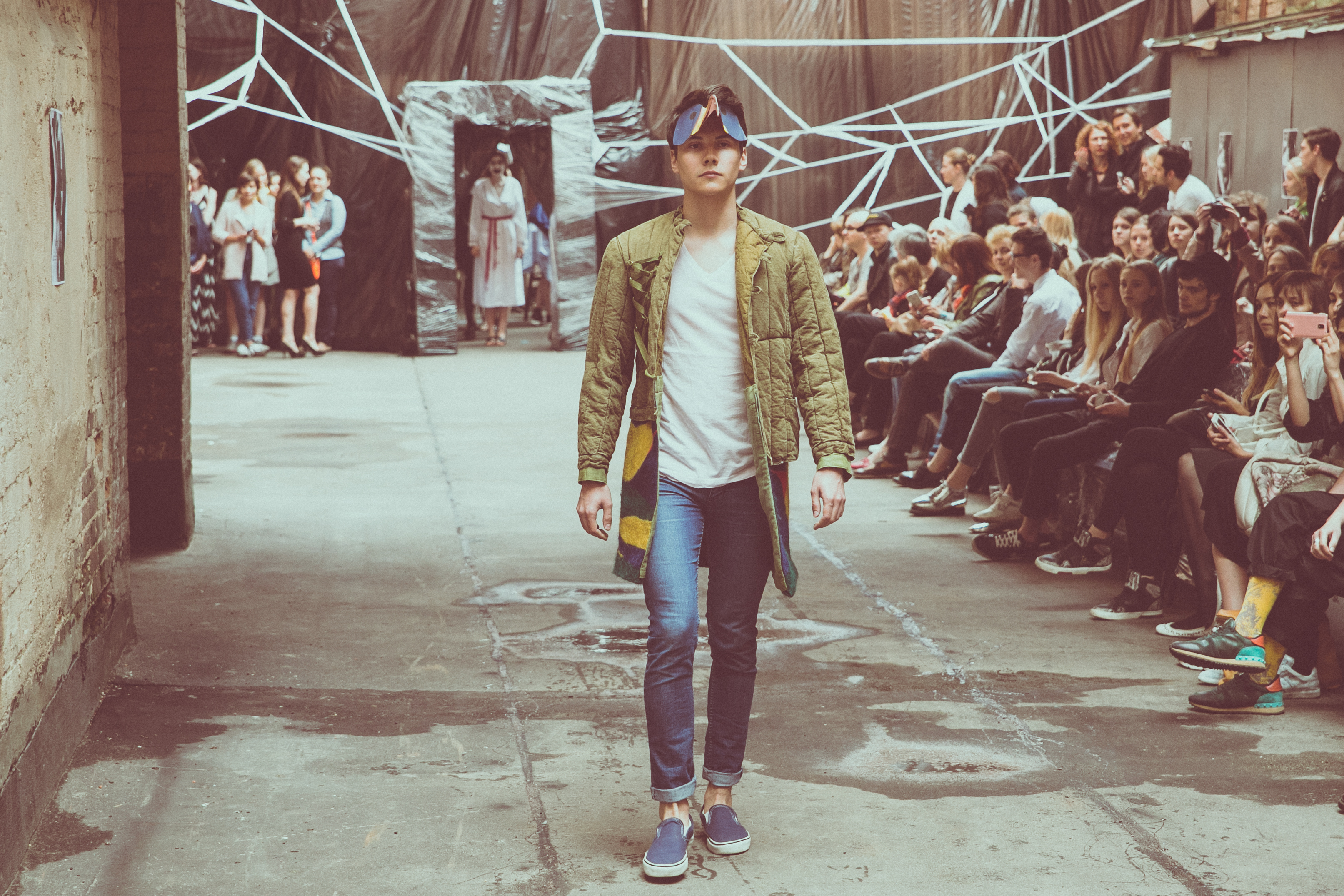- A
- A
- A
- ABC
- ABC
- ABC
- А
- А
- А
- А
- А
-
Schools
-
Educational Programmes
- Bachelor's Programmes
-
Master's Programmes
-
- Design (RU)
- Data Journalism
- Integrated Communications
- Data-Driven Communication
- Film Production
- Communications in the Public Sector and NGOs
- Communication and Digital Design (RU)
- Strategic Communications Management — online (RU)
- Critical Media Studies
- Media Management
- Fashion (RU)
- Modern Art Practices (RU)
- International News Production
- Contemporary Journalism
- Contemporary Technologies in Teaching and Art (RU)
- Transmedia Production in Digital Industries
-
-
Faculty
E-mail: cmd@hse.ru
The Faculty of Creative Industries is one of the most popular faculties at the Higher School of Economics. Today we have more than 5 thousand students. In the international QS ranking in the communications and media subject area, the HSE is ranked among the leading universities in Russia, and in the Art and Design category HSE became the best Russian university and entered the top 200 international universities.
Our faculty is one of the largest centers for training specialists in the creative industries: it brings together the best teachers and curators from among practicing professionals, talented students and successful graduates who work in leading russian and world companies or create their own startups.
Drama and Film Acting
Global Digital Communications
Online programme
Design
Journalism
Film and Television Production
Media Communications
Fashion
Advertising and Public Relations
Strategy and Production in Communications
Management in Creative Industries
Design
Environment Design
Data Journalism
Integrated Communications
Interactive Media and Digital Industries
Interactive Design
Online programme
Film Production
Communications in the Public Sector and NGOs
Communication and Digital Design
Media Management
Fashion
Curatorial Practices in Contemporary Art
Producer in the Music Industry
Theatre and Performing Arts Producer
Contemporary Journalism
Contemporary Media Research
Management in Creative Industries
Online programme
Strategic Communications Management
Online programme
Digital Communications and Product Analytics
In press
Шестерин Н. О.
Communications. Media. Design. 2025.
Matkin N., Smirnov A., Usanin M. et al.
In bk.: 12th International Conference, AIST 2024, Bishkek, Kyrgyzstan, October 17–19, 2024, Revised Selected Papers. Cham: Springer, 2025.
Арман О., Eremenko J., Zinchenko O. et al.
Zinchenko, O., Onurcan, A., Eremenko, Y., & Shestakova, A. (2024, November 21). CROSS-CULTURAL STUDY ON THE EFFECT OF PERCEIVED TASTES ASSOCIATED TO SOUNDS ON THE PERCEPTION OF FOOD TEXTURES. https://doi.org/10.31234/osf.io/n37tw. Zinchenko, O., Onurcan, A., Eremenko, Y., & Shestakova, A. (2024, November 21). CROSS-CULTURAL STUDY ON THE EFFECT OF PERCEIVED TASTES ASSOCIATED TO SOUNDS ON THE PERCEPTION OF FOOD TEXTURES. https://doi.org/10.31234/osf.io/n37tw. PsyArXiv, 2024

Art and Design School Fashion Show

The costumes presented were not a single collection; rather, they were visual illustrations of the extensive research that each student in conducted under the direction of Maria Smirnova (Inshade), the course’s curator and designer. ‘During the last module, we worked on final projects; we chose a topic, explored it from available sources, and then moved on to creating mood boards and sketches. Only after that did we begin working on the item itself’, said Alina Lobanov, one of the show’s participants.

The themes of the costumes were very different – ranging from the principles of Japanese deconstructivist designers to merging traditional Tibetan costumes with skate culture. ‘I studied the Japanese designers, but I transferred their working methods to my own associations, so my work is both an allusion to the Russian sundress and a quilted jacket’, explained Alina. ‘My choice of materials – linen and crepe de Chine – is connected with Russian motifs’.

Despite the fact that each designer had his or her own idea, the show was united by a common concept of the Black Box – an unknown space obtaining information and hiding the production process. Preparation for the event was motivated by this idea – brick walls were draped with black cellophane and chairs were loosely covered with cling film.

The students not only designed and sewed costumes, but they also came up with the show’s concept and the corresponding design for the event. In addition to creating a costume, each student took on additional responsibilities. One was in charge of directing, and others were responsible for casting, styling, make-up for models and postproduction. The students were thus able to try their hand in different guises and understand what area of the fashion industry is most interesting to them.

This is the second fashion show held by the Art and Design School. Last December, students staged Papershow, which featured costumes of unusual and unexpected materials, including perforated and ruffled paper, plastic spoons and cocktail straws...
- About
- About
- Key Figures & Facts
- Sustainability at HSE University
- Faculties & Departments
- International Partnerships
- Faculty & Staff
- HSE Buildings
- Public Enquiries
- Studies
- Admissions
- Programme Catalogue
- Undergraduate
- Graduate
- Exchange Programmes
- Summer Schools
- Semester in Moscow
- Business Internship
-
https://elearning.hse.ru/en/mooc/
Massive Open Online Courses
-
https://www.hse.ru/en/visual/
HSE Site for the Visually Impaired
-
http://5top100.com/
Russian Academic Excellence Project 5-100
- © HSE University 1993–2025 Contacts Copyright Privacy Policy Site Map
- Edit

